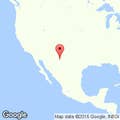CIUDAD JUÁREZ, México — The police scanner buzzes, filling the otherwise quiet newsroom where Lucio Soria is skimming through his competitor’s websites with white noise. Suddenly, an “86” crackles through. Soria, a photographer for El Diario de Juárez, puts down his coffee mug, snatches up the scanner, and presses it to his ear.
“Let’s go, let’s go, let’s go!” Soria says after a few seconds, leaping down a flight of stairs to the parking lot and into a Ford Ranger. Juggling a cell phone in each hand, he zigzags around slow-moving cars before screeching to a halt at a set of traffic lights on the highway, loudly cursing at both.
Soria, who reckons he has photographed more than 3,500 homicide victims in Ciudad Juárez, loves the adrenaline: being the first one to arrive at a crime scene, having exclusive access to victims, and getting his lens as close as possible to mangled bodies makes him feel alive. As he swerves between the traffic, just a couple of fingers touching the wheel, Soria reminisces, with a mix of pride and longing, about the time he had two severed heads all to himself, so close he would’ve been able to feel their breath if they had still been alive.
But today is different. In fact, the last few years have been different. Quieter.
On the road up ahead, policemen idle near an empty van that has flipped onto its side. Soria walks around it and then goes over to peek at a nearby vehicle, where a shocked but barely scratched woman is slumped over in the passenger seat. “It’s light but at least we have work,” Soria tells me, jotting down a few notes on a notebook.
Just four years ago, covering a car accident would have been unthinkable: Reporters did not have time and the paper did not have space. With almost 60 homicides a week, journalists were barely done adjusting their camera settings and taking down victims’ names at one crime scene before rushing off to the next. Ciudad Juárez was known around the world as the capital city of murder. During this killing spree, Soria’s images captured the carnage in graphic detail.

With little to report from the car crash, we are waved off by the police officers, who know Soria well. He climbs back into the van, his skin glistening with sweat, and we’re off in search of more work. He’s bored, even while fielding back-to-back calls, including one from Luz del Carmen Sosa, his colleague at the newspaper, asking him to track down the one death that occurred during Pope Francis’s recent visit: a 49-year-old man who died from a heart attack.
“Now we say, jokingly, that there is no raw material,” says Daniel Domínguez, a crime reporter for La Polaka, a digital newspaper in the city. Crime reporters are a tight-knit family here; they never expected to witness so much brutality and have been left with a shared black sense of humor.
It’s not just laughter that bonds them: Now that the violence has largely subsided and life is calmer, they can also begin to disentangle the horrors they captured together. They had to learn to photograph and describe death, and now, after moving on from an era of hyper violence, are figuring out how to fill in the voids it left.
Soria reminisces, with a mix of pride and longing, about the time he had two severed heads all to himself.
As Soria, 64, drives to one of his two ex-wife's houses to run a personal errand, he begins to talk about what he knows most intimately: death.
On that road, says Soria as he nods to his right, he photographed several policemen who were burned to death. Look at that hotel on the left, the one with the blue facade: It’s a dumping ground for bodies. That empty lot? That’s where he shot images of a 17-year-old who had been strangled. Soria recalls the man who begged him for help before taking his last bloody breath in front of him. He remembers when he had to photograph his two murdered colleagues.
Armando Rodríguez, a longtime reporter at El Diario de Juárez, was leaving his house early one morning in 2008 when a man walked up to his car and emptied a magazine into his body. Two years later, Luis Carlos Santiago, a 21-year-old photographer at the newspaper, was murdered outside a shopping mall in the city. Soria covered both.
Soria, who wanted to be a doctor but ran out of money before he could finish his studies, googles himself while we sit in a parking lot, scanning the images that come up. A few years ago, it was all charred bodies and grisly murder scenes, but one of his more recent assignments was on the traffic jam caused by the first of day of term at the local university. Soria, a staffer at El Diario de Juárez since 1993, stops at a portrait of himself.
“I’m so pretty, aren’t I?” he says with a laugh.
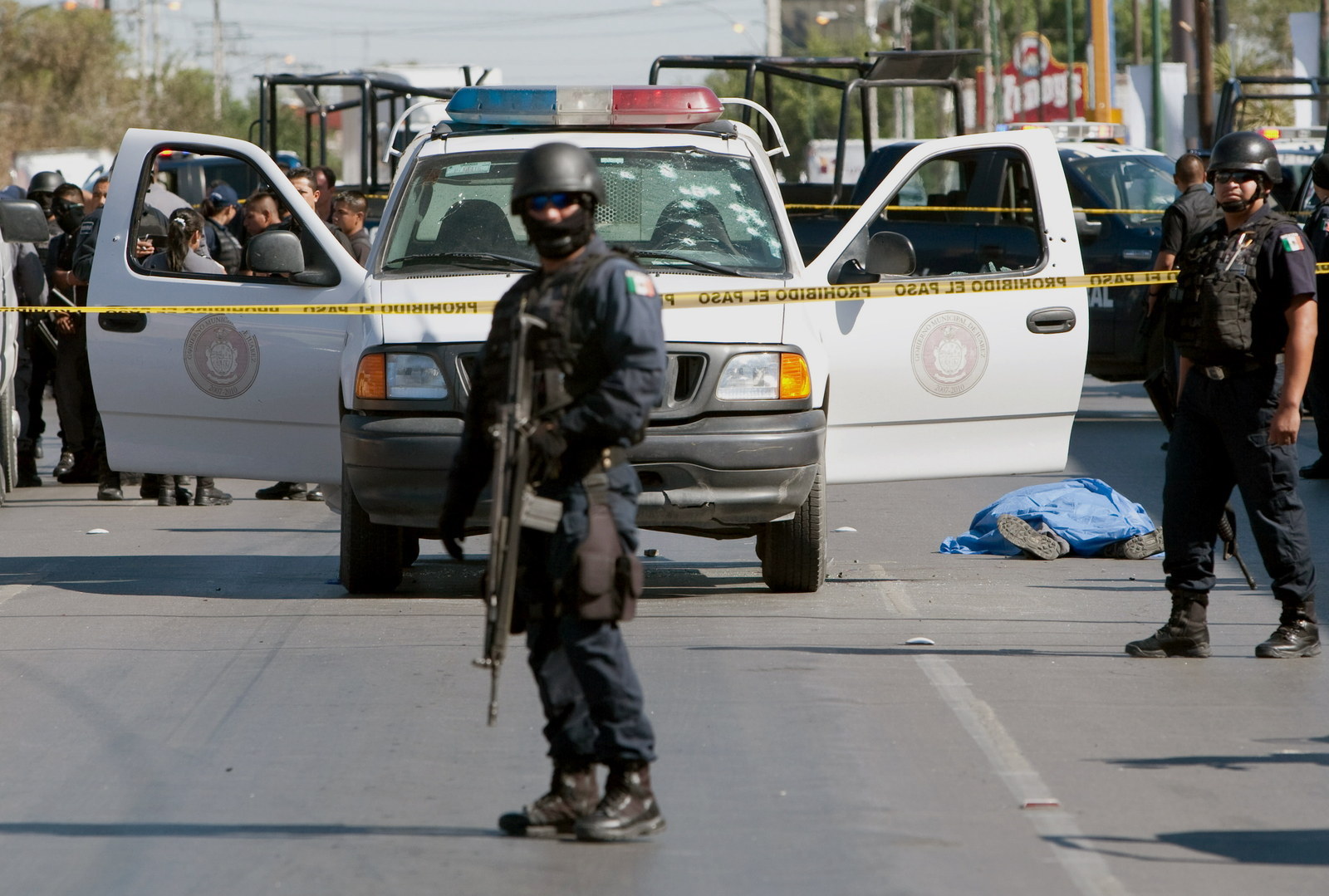
Violence exploded in Ciudad Juárez in 2008, when two powerful organized crime groups — the Juárez and Sinaloa cartels — went to war for control of one of the main drug transport routes into the United States. The city became a war zone, with confrontations erupting in restaurants, houses, and even schools. Entire neighborhoods were abandoned, streets were deserted, and nightclubs emptied out. Doctors said that a quarter of the population became afflicted with post-traumatic stress disorder.
What happened in Ciudad Juárez, a city of 3.4 million residents just across the border from El Paso, had been brewing for decades, some 2,600 miles south.
In the 1970s and '80s, powerful Colombian cartels controlled the drug trade in Latin America; the country bore the brunt of drug-related violence and depended on Mexican groups only to ferry their illicit merchandise into the U.S. But as Colombian authorities began dismantling these cartels in the 1990s, criminal syndicates in Mexico grew in autonomy and power. The Sinaloa cartel, in particular, became a mammoth organization, gaining control over a large part of Mexico and extending its tentacles across the Atlantic and Pacific oceans. The group’s leader, Joaquin Guzmán Loera, known as El Chapo, was recently recaptured after his second jailbreak.
In 2006, former Mexican President Felipe Calderón launched an offensive on drug cartels, weakening some of the newer groups and causing these to split into hundreds of smaller, more vicious gangs that are more difficult to control than ever before. Since then, more than 100,000 people have been killed in the drug war.
Ciudad Juárez became, shortly after, the deadliest battlefield in Mexico’s drug wars. Iván Ramos, an autopsy technician at the local morgue, had to go pick up bodies around the city in between procedures; ambulance drivers could not make it to all the crime scenes fast enough. Ramos, 27, estimates that between 2008 and 2010 he participated in around 30 autopsies per day. When his shifts ended, “I just wanted to sleep,” Ramos says — in part because that way he wouldn’t have to deal with friends complaining about the smell that permanently trailed him.
In 2010, at the height of the war, El Diario de Juárez published a front-page editorial asking the two rival cartels for a truce, calling them the city’s de facto authorities. By then, Rodríguez and Santiago had been murdered (their names are printed on the bottom of the newspaper’s front page every day).
“We want to let you know that we are communicators, not psychics. Therefore, as information workers, we want you to explain what it is you want from us, what you intend for to publish or stop publishing, to know what we are up against,” the editorial said.
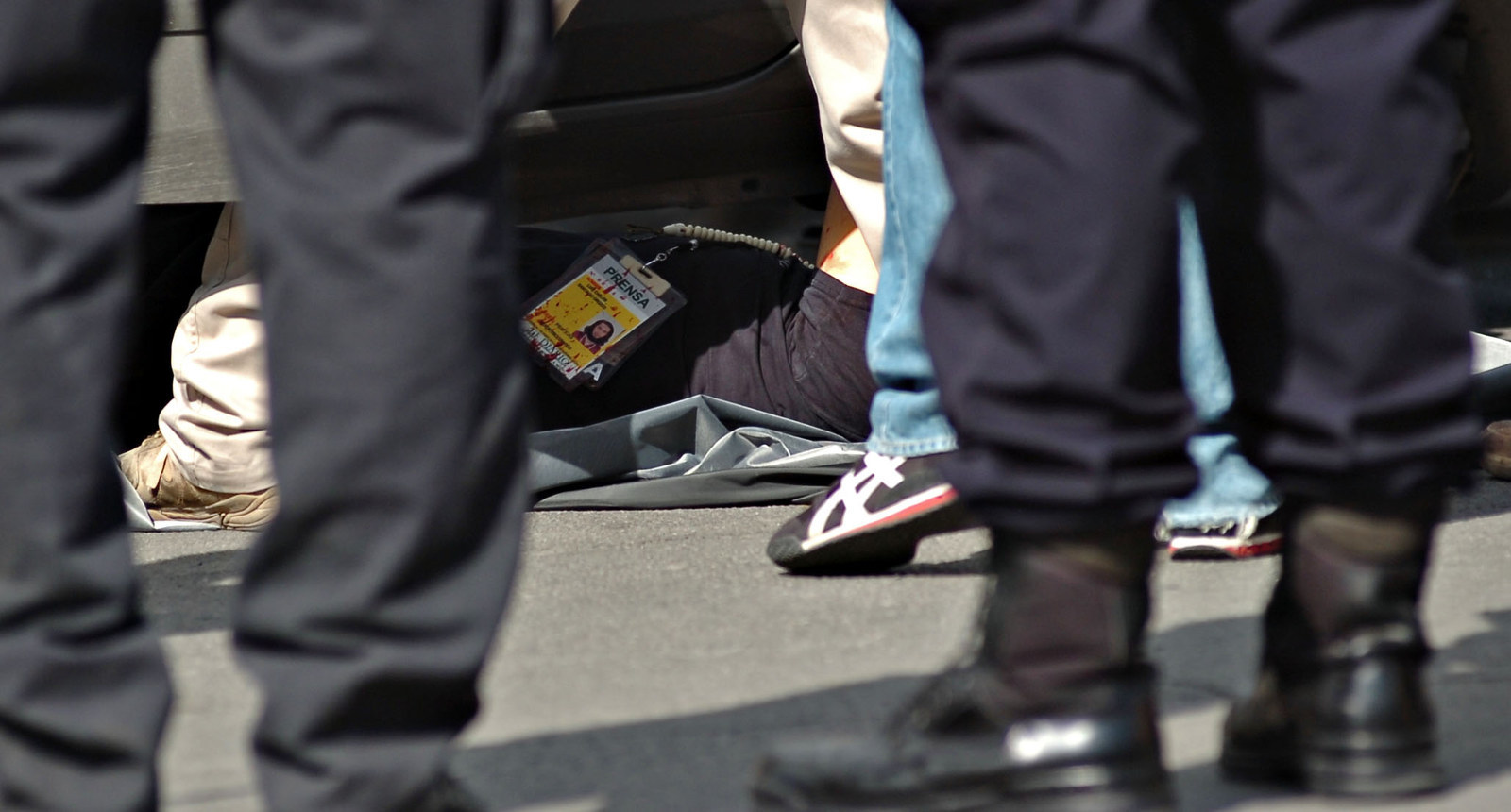
It was a war, but its battle lines were unclear, its soldiers unrecognizable. Authorities, too, committed abuses while protecting one cartel over the other, many here believe.
“If you went to Syria, you know where the rebels are and where the army is. Not here. You didn’t know if they were behind you,” says Luis Torres, a photographer at El Diario de Juárez, as he sorts out his equipment in the newsroom.
Soria and his colleagues suddenly found themselves in a battlefield — untrained, unarmed, and overwhelmed. They made a pact to go to crime scenes only as a pack, even if that meant forgoing exclusive coverage. Often, they could see puddles of blood from where they huddled together eating their takeout meals.
Domínguez, who has covered crime in Ciudad Juárez for 28 years, received countless threats during the war, like many of his colleagues. He became hyper-alert to his surroundings, changing his route daily, often sneaking out of his back door and sleeping at his aunt’s and sister’s homes. If he agreed to meet his family at the movie theater he would arrive late and they would leave separately.
For many foreign correspondents who parachuted into the city for a few days, Ciudad Juárez became a courage badge, a résumé builder, and a conversation starter at parties back home.
But for Soria and his colleagues, death became inescapable. It was their life.
Many say they became so accustomed to death it stopped shocking them. “It’s like employees at maquilas,” said Eduardo Urrutia, a videographer for Canal 44, a local channel, referring to factories that export their products. “They hurt their hands. Here, it came to the point where we became cold.”
Despite the extraordinary risks they have faced, the journalists I spoke with said they never thought about quitting and reeled at the thought of being portrayed as heroes. “I’m not sure why I’m in this story,” says Sosa, a reporter with whom Soria frequently works. “What I don’t want is to look like a victim. We just have a duty to inform.”
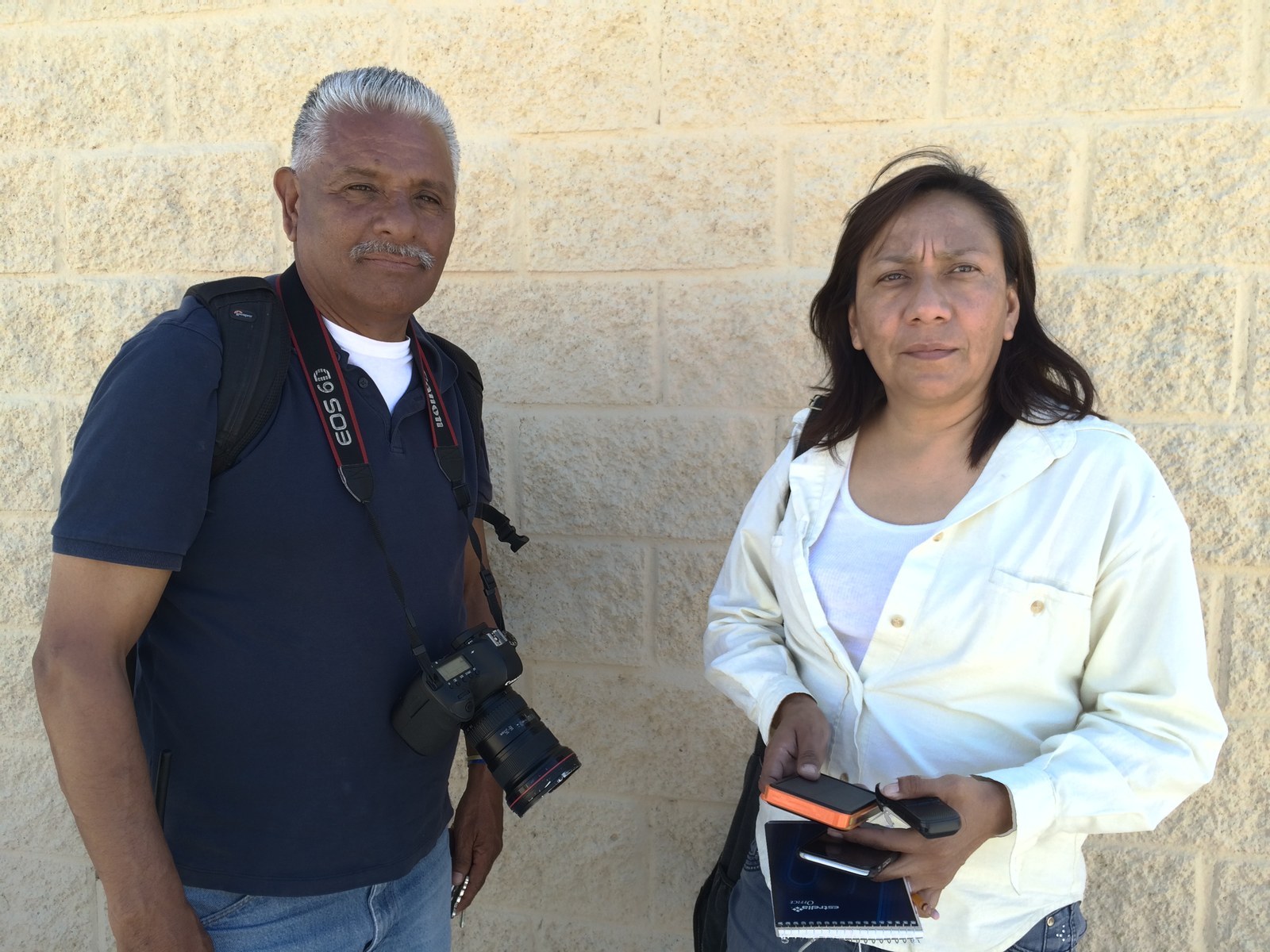
Wounded by violence for so long, the city began a slow return to relative normalcy around 2013. The reasons for this reversal are varied and controversial: A police chief known for his aggressive methods, Julián Leyzaola, swept in and, human rights advocates say, rounded up large numbers of young men indiscriminately; the previous administration launched “Todos Somos Juárez," a program involving the three levels of government, civil society, and businessmen, who built community centers, handed out scholarships, and extended school days to keep otherwise-idle youth busy; and the Sinaloa cartel triumphed over its rival, bringing the city under the control of one group and reducing the number of confrontations.
Violence has plummeted: There were 312 homicides last year, down from a peak of 3,057 in 2010.
What is indisputable is that violence has plummeted: There were 312 homicides last year, down from a peak of 3,057 in 2010. Other crimes, like kidnapping, car theft, and bank robberies have also decreased, according to the state’s attorney general’s office.
The official numbers are reflected on the city’s streets, where people can now be seen out taking a stroll, a stark contrast to even just three years ago. And it’s not just residents that have regained their trust — business, too, is booming. Many maquilas have signs posted on their walls advertising job openings and attractive benefits.
Most tellingly in a city that saw nearly 20% its population flee between 2007 and 2010 is a new sense of belonging and pride. The Jrz brand, reminiscent of the "I Love NY" campaign, has come out with sweatshirts, mugs, and public sculptures, filling the city with its red, heart-dotted J. A Facebook group called <3 Jrz, for the city’s initials, has nearly 50,000 members and participants frequently post photos of themselves beaming around the city and advertise free events. And during Pope Francis’s recent visit, massgoers said the event was an opportunity to show the world that Ciudad Juárez is a good place, after all.
That is not to say the city is a safe haven or that crime has disappeared. In the week following my ride-along with Soria, he says he photographed five homicide victims. The U.S. State Department recently reissued its travel warning for Ciudad Juárez.
But still, this period of relative calm has brought about a reckoning for Soria and his colleagues: How did witnessing so much death change them and who have they become now that the city is quieter and the adrenaline of war is nearly gone?
“I’ve never been affected by anything. I’m completely normal,” says Soria, sitting at a table with several colleagues last month, at a ceremony for police officers who provided security during the pope’s visit. Soria, like the others, discloses the record number of deaths he photographed in a single day — 20 — unprompted, the way strangers reveal the number of children they have. He became a photographer only by chance after getting a job as a cleaning man at a photo studio.
Death became so normal that “even when members of our own families died, we didn’t cry,” says Urrutia, the Canal 44 videographer.
Sosa was listening intently from the other side of the table. “I don’t agree. They are sensitive. They’ve just gone through so much that they are trying to bulletproof themselves so that they don’t get so damaged,” she says to me. “We shouldn’t allow guilt in for what we do,” she added after Urrutia said he used to eat while filming bodies strewn on the ground.
Sosa, who has profound admiration for photographers and videographers because they “had to get closer than anyone else,” says that she has seen her colleagues’ personalities change: Some have become more irritable and impatient and a few have developed noticeable ticks and slight speech impediments. At least one is being treated for PTSD.
“I don’t want to use the word bitter, but I do think he’s become more bitter,” she says of Soria, who she often has to calm down when he gets frustrated and starts hitting the steering wheel. Soria, sitting next to Sosa, listens but says nothing. The others are quiet, too.
It is almost inevitable that covering so much death and violence would take its toll on these reporters, says Luz María González Salazar, an expert on post traumatic stress disorder at Mexico's National Autonomous University. Exposure to such extreme brutality, and the fight or flight mode it engenders, can cause people to seek out similar situations and sensations even when normal life resumes.
“A person may be looking for events where there is a big adrenaline charge as a way to feel like they have more control over their life,” says González. It's an unconscious process, she says, but the adrenaline rush makes them feel more alert and allows them, if they feel threatened, to react faster.
In the long term, González says, exposure to this kind of trauma can lead to addictions and violent behavior.
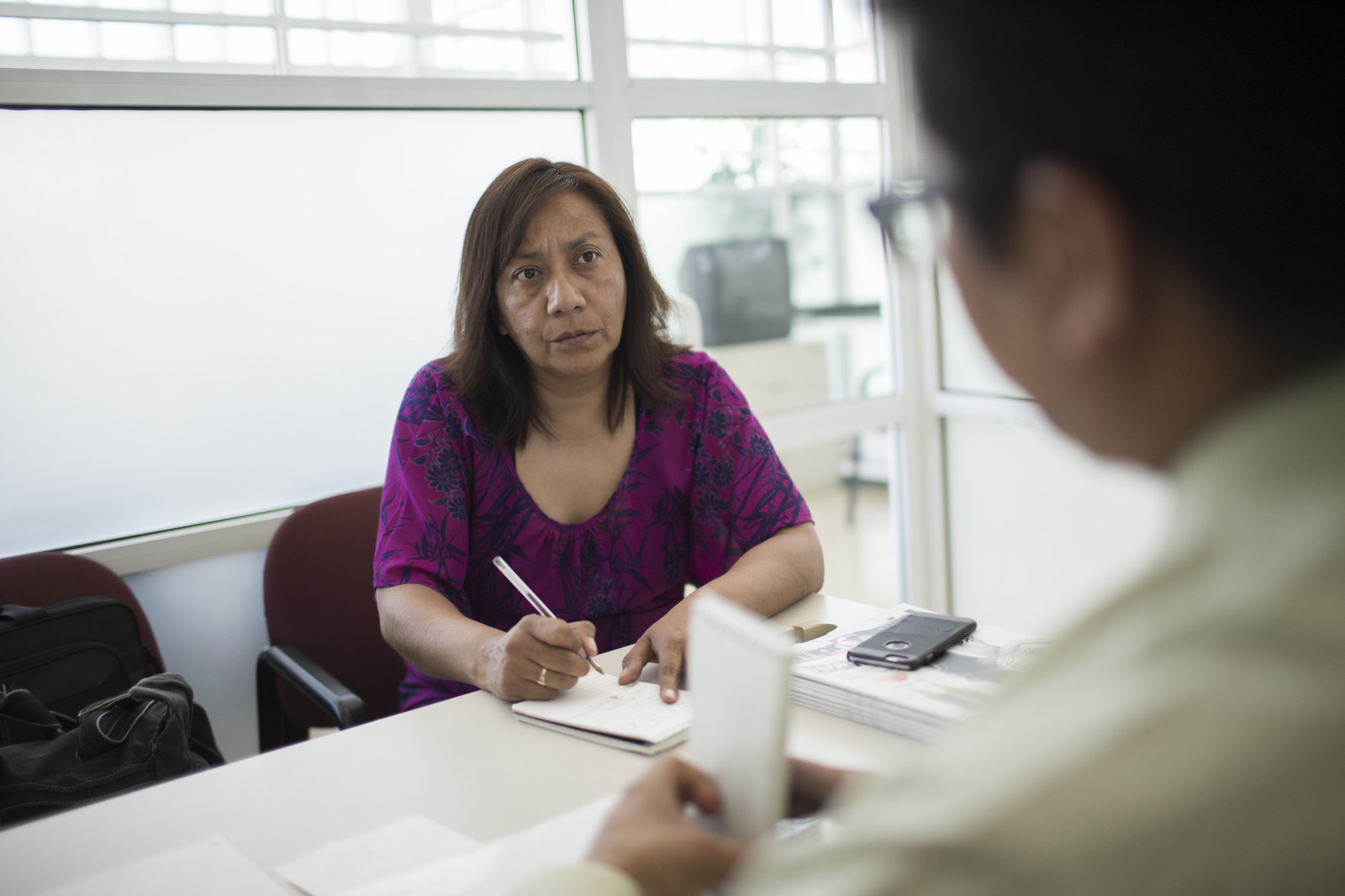
Salaries for El Diario de Juárez are some of the highest for journalists in the city: photographers make between $440 and $650 a month and reporters earn anywhere from $660 to $1,650, Sosa says. Still, they are low for a community whose work left deep emotional scars that time may not entirely erase. Why did they do it?
“How was it possible to let narcos define the coverage?” asks Sosa, whose ashen skin appears permanently creased between her brows. My colleagues, she adds, “they are so brave.”
“And crazies, right?” asks Soria says with a smile. His half-joking, half-serious self-assessment is echoed by many others here. “We already know we are nuts,” says Walter García, a cameraman for Televisa, a national television network.
Few crime reporters in the city have gone to therapy. Instead, some have improvised healing rituals. Daniel Domínguez, the reporter at La Polaka (his record, he volunteers a few minutes into the conversation, is 34 dead in a day), turned one of his children’s rooms into his decompression chamber. “My children call it ‘daddy’s crying room,’” he said, adding that he listens to music there — Barry Manilow is a favorite of his. But since homicides dropped, he’s been spending less time in his bunker. “I’m becoming a transit expert,” Domínguez says, laughing. Most of his work now involves covering traffic accidents and fires.
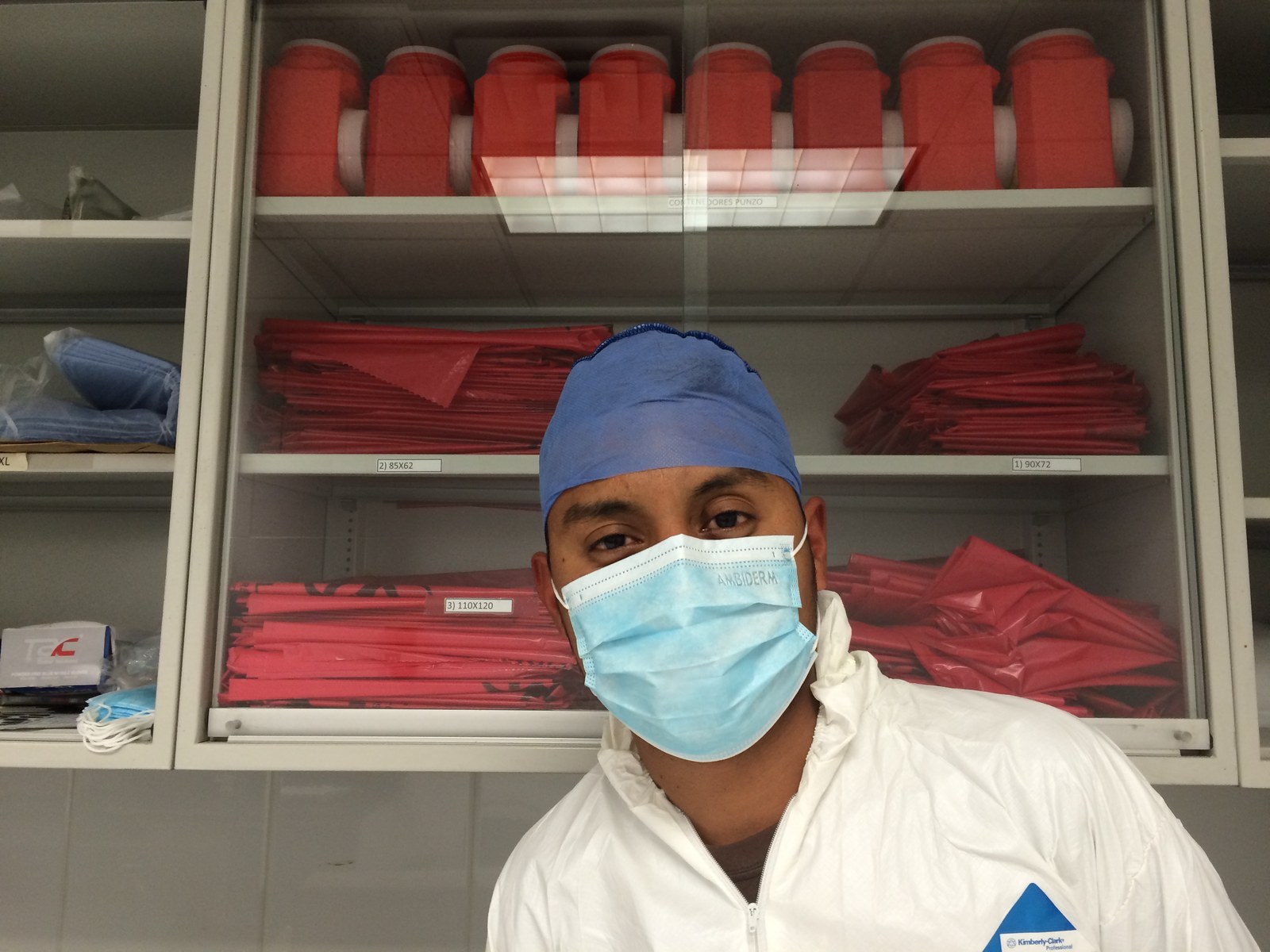
For others, it’s been focusing on family. Ramos, the autopsy technician, no longer has to work three shifts in a day, and when he does, it’s mostly on natural deaths. Sleeping off the terrors he saw on the operating table has given way to spending time with his wife and their 4-year-old son.
Sosa, a 46-year-old grandmother, is one of the lucky ones who has talked a psychologist, though she had to pay for it herself. She has become overwhelmingly apprehensive, and “my children are paying a high price for the consequences,” having to check in with her constantly. Part of her healing process has been to focus on positive stories now, like those of former criminals who have turned their lives around.
Still, Sosa, Soria, and their colleagues have one thing in common that none can shake off: the ghosts that trail them around the city. At least half a dozen reporters told me that, to this day, they can’t help visualizing, almost compulsively, the crime scenes they reported on. It happens on the way to work, to pick up their children from school, when they’re going back home after a night out.
But this period of calm has also opened up the possibility of going deeper into what happened during the war, who its victims were, and how years of violent deaths left a hole in families across the city.
“Now is the time to rescue those stories, the collateral damage, the stories that were part of that violence. The damage that remains,” said Luis Torres, the other El Diario de Juárez photographer. “Fifteen years will go by where we will still be seeing the consequences,” he adds.
When gunmen killed 15 teenagers at a house party in 2010, mistaking them for members of a rival cartel, Sosa told her editor she would not be able to cover the funerals and speak to relatives. It was one of the grisliest massacres of the war, prompting former President Felipe Calderón to acknowledge that the victims were innocent, a rarity in a country where most young men killed by organized criminals are presumed guilty. Most were students and some were athletes.
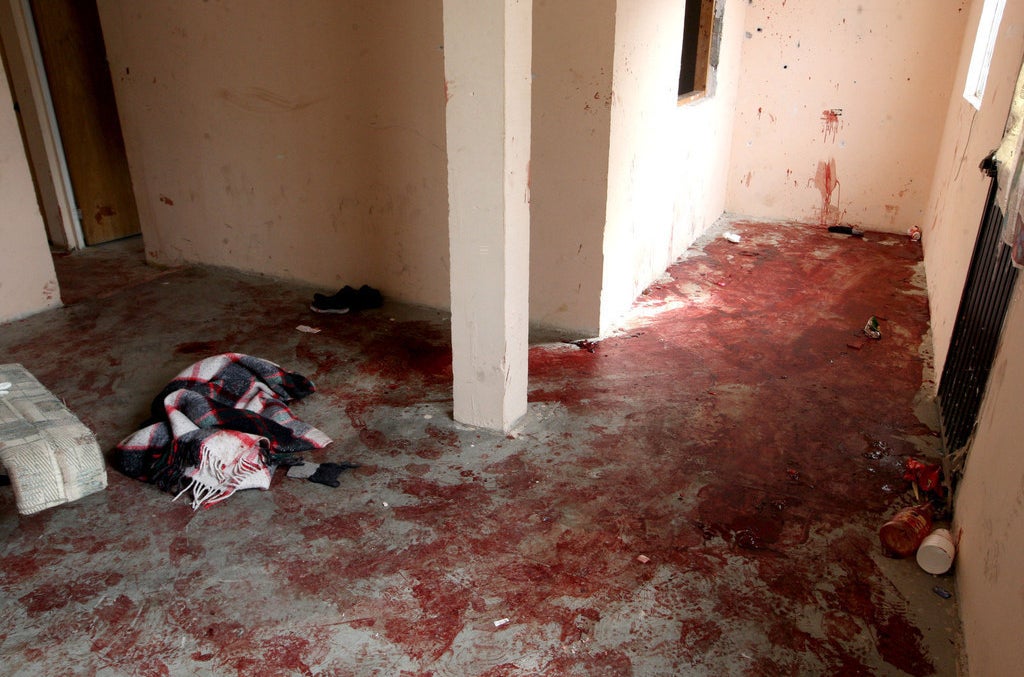

The scene where 15 teenagers were killed in 2010, and the same house with memorials to the victims in 2016
Sosa’s children, back then, were the victims’ age, so she couldn’t bring herself to report on the grieving parents at the time. Instead, she wrote about ballistics and other factual details of the investigation. But since then, Sosa has returned to the story, and has written about the victims’ relatives in detail. Years of constant carnage have made her a better reporter she says. She’s focused on doing her job right, and wants not only to tell the victims’ stories, but also to find elusive clues amid the often chaotic crime scenes.
“Are these fuckers dead already or not?”
Sosa says the human drama that they documented during the war is no different than that of the deadly car crashes they cover regularly now. Yet, many journalists admit to missing the adrenaline surrounding grisly homicides, and a desire to cover them lurks around like a dormant addiction.
After stopping to eat burritos at a food stand on the side of the road where he’s become a regular, Soria gets a call: There’s an “18-30.” A shootout. Finally. “Are these fuckers dead already or not?” he barks into the phone. No information yet.
“I hope they’re dead because if they’re just injured we won’t get there in time to do shit,” Soria tells me, gripping the steering wheel. He speeds up as he drives through several red lights, only an hour left in his morning shift. “I just want to get there. It’s the fucking adrenaline,” he says, imitating a rapidly beating heart with his right hand. “I’m always the first one to all events.”
He pulls up to the yellow police tape cordoning off the street and asks a group of curious onlookers: No, no dead. Soria takes a few photographs with his phone and sends them to his editor, and, deflated, gets back in his car — he’s looking forward to picking up his granddaughter and taking her to eat hamburgers. As he drives past his colleagues on the other side of the crime scene, Soria rolls the window down and, imitating a gesture the pope had made earlier that week, points at them and acts serious.
“Pray for me,” he says, with a smile.
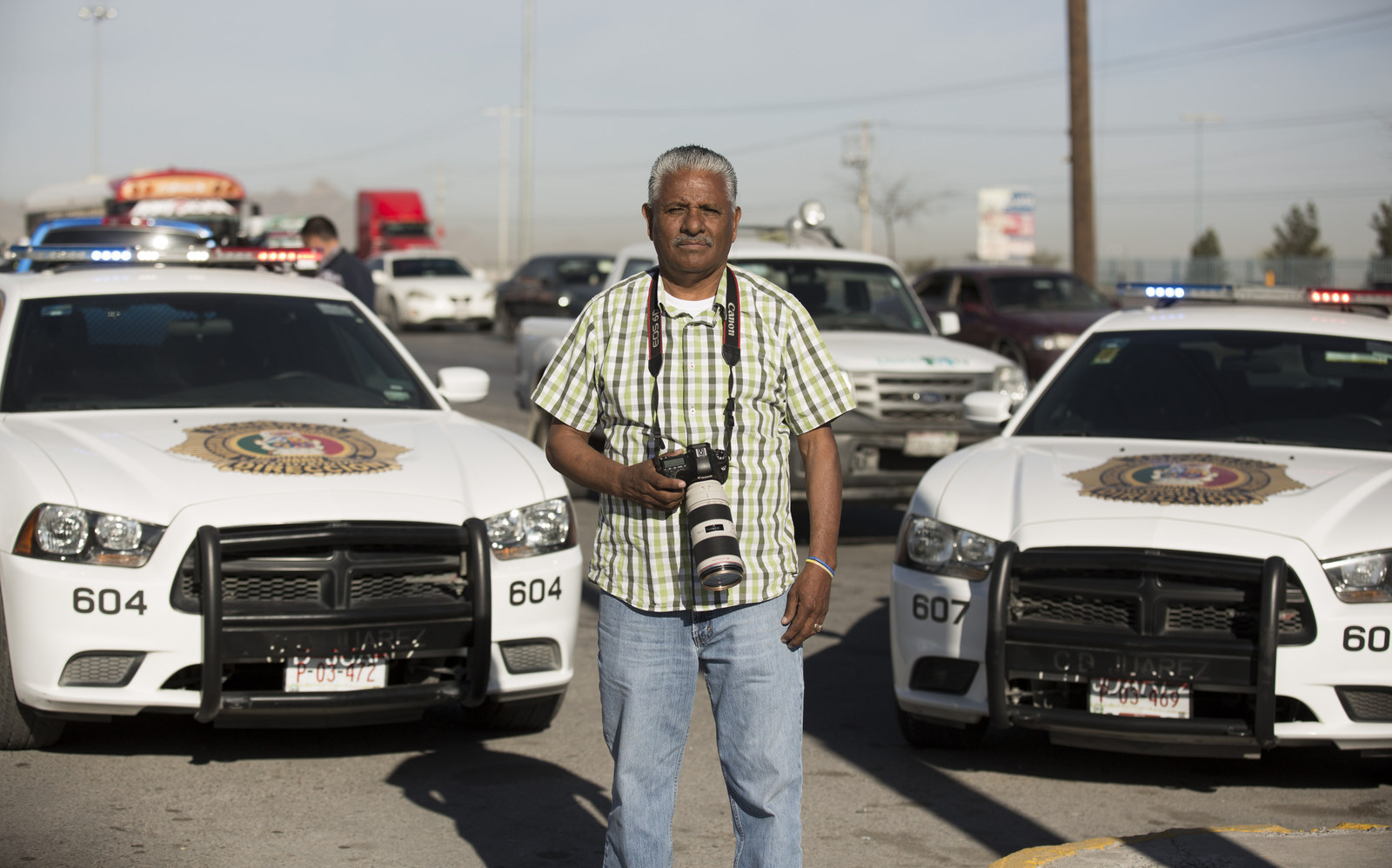
CORRECTION
In the shooting of Armando Rodríguez, the killer fired a whole magazine of bullets. A previous version of this post used incorrect terminology that implied there was only one shot.

